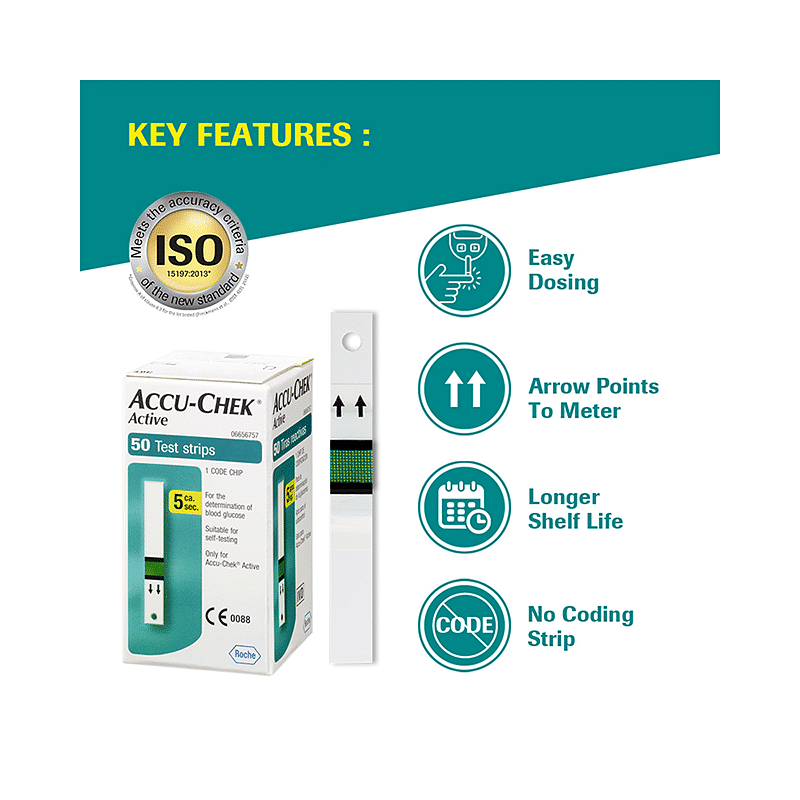
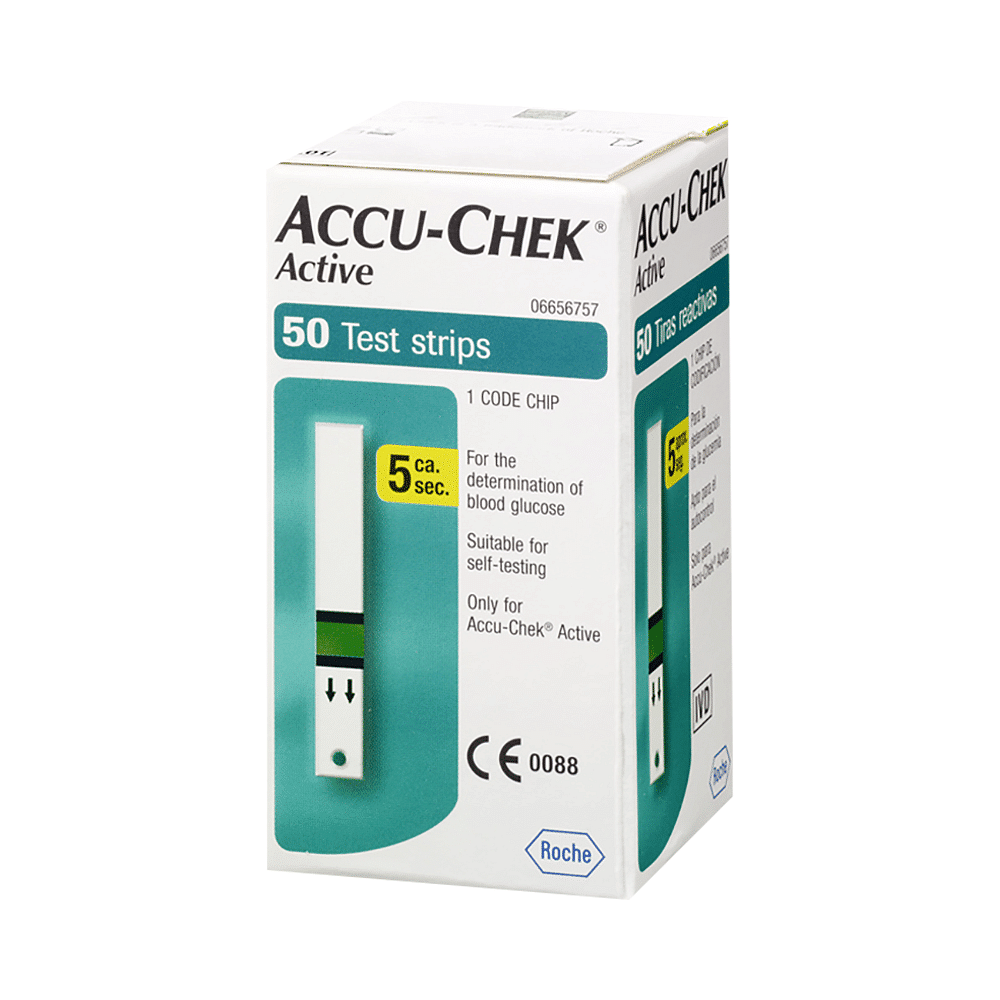
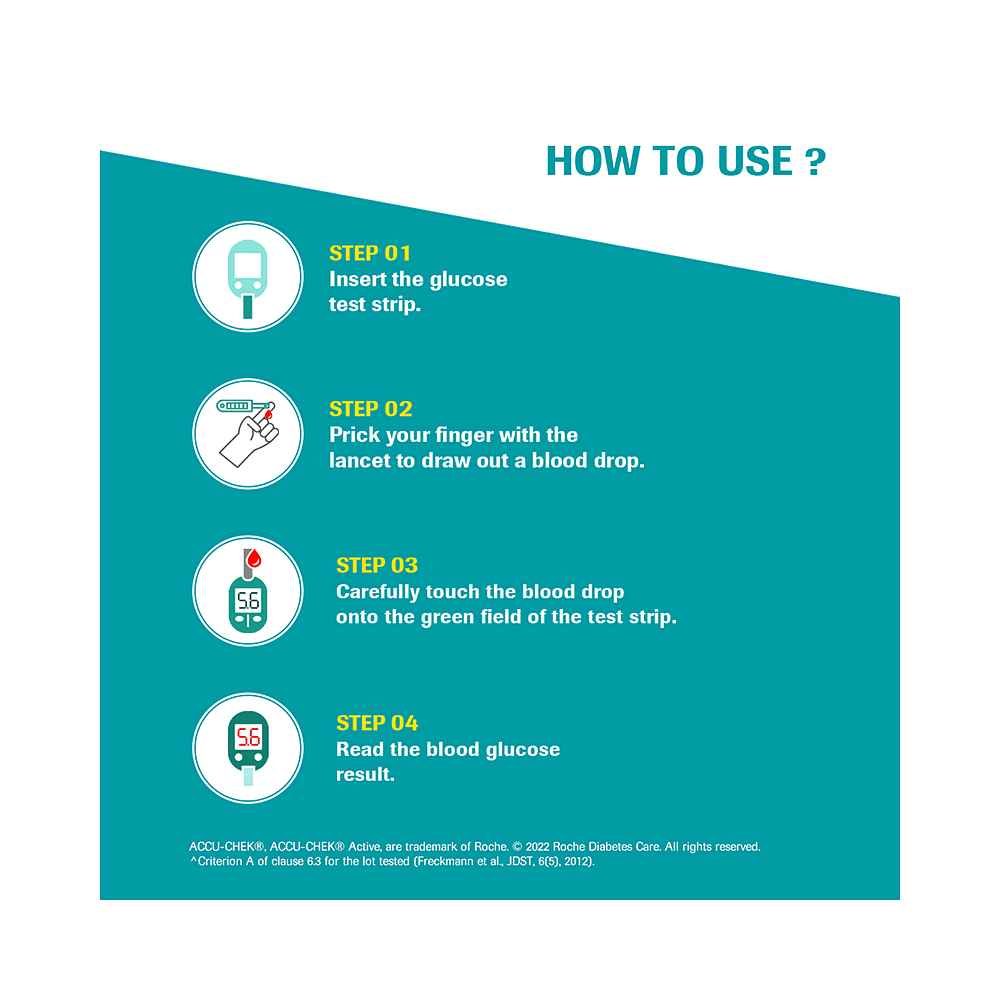
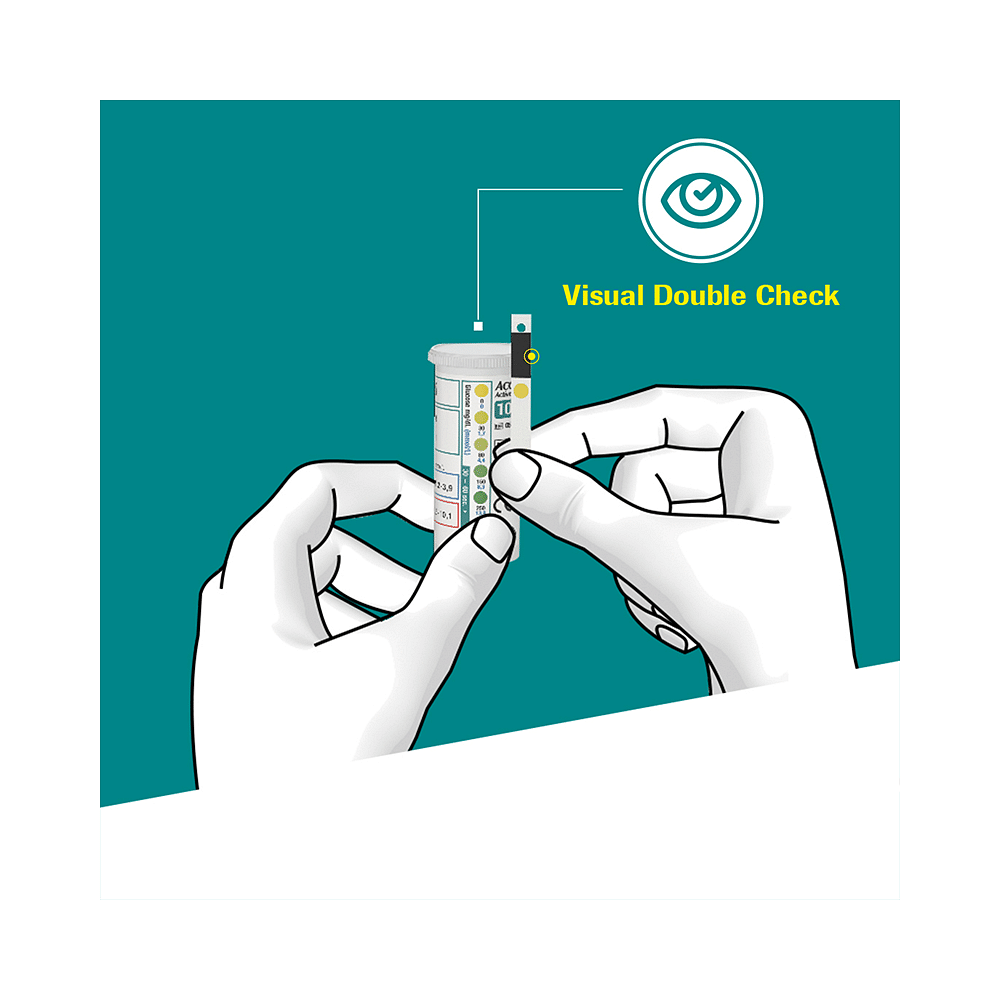
Accu-Chek Active Test Strip
Manufacturer
Roche Diagnostics India Pvt Ltd
Key Information
Short Description
Accu-Chek Active Test Strip is a diabetes monitoring device that helps determine blood sugar levels in the body. It is a hassle-free product that does not require manual coding and provides quick and reliable results.
Dosage Form
Test Strip
Introduction
Accu-Chek Active Test Strip is a diabetes monitoring device that helps determine blood sugar levels in the body. It is a hassle-free product that does not require manual coding and provides quick and reliable results. The test strip absorbs blood easily and shows reliable results in a few seconds. It can be used for both professional and personal use.
Directions for Use
Remove a single diabetes test strip from the box of strips.Insert the glucose test strip.Prick the finger with the lancet to draw out a blood drop.Carefully touch the blood drop onto the green field of the test strip.Read the blood glucose result
How it works
The test strip contains an enzyme glucose oxidase, which reacts with glucose in the blood and sends the result as an electronic signal displayed on the monitor.
Quick Tips
For in-vitro diagnostic use, only Store in a capped vial in a cool and dry space between 4-30 degrees Celsius Discard any remaining test strips three months after the first opening of the vial Do not take any medical decisions without consulting a doctor Always discuss the results with a registered medical practitioner
Related Medicines
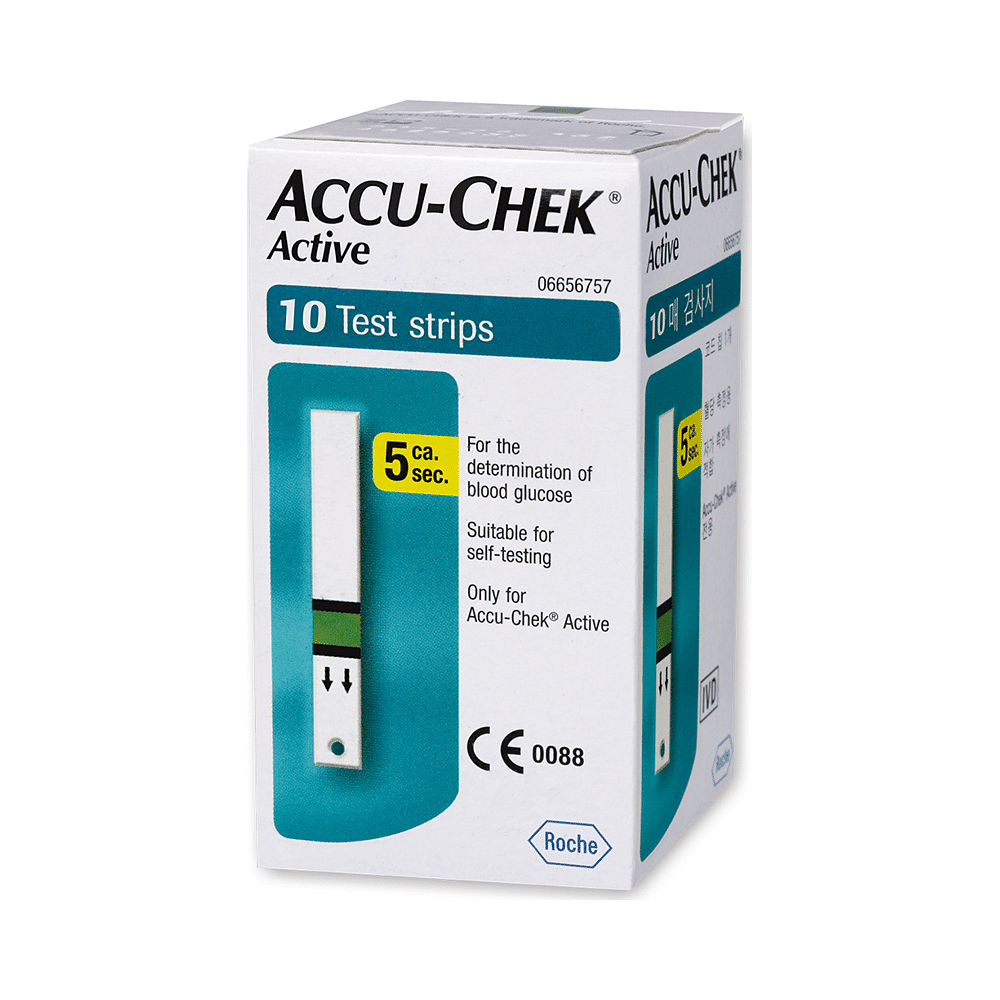
Accu-Chek Active Test Strip (Only Strips) | Diabetes Monitoring Devices

AVG Amla Vital Green with Vitamin C & Iron | Helps Build Immunity
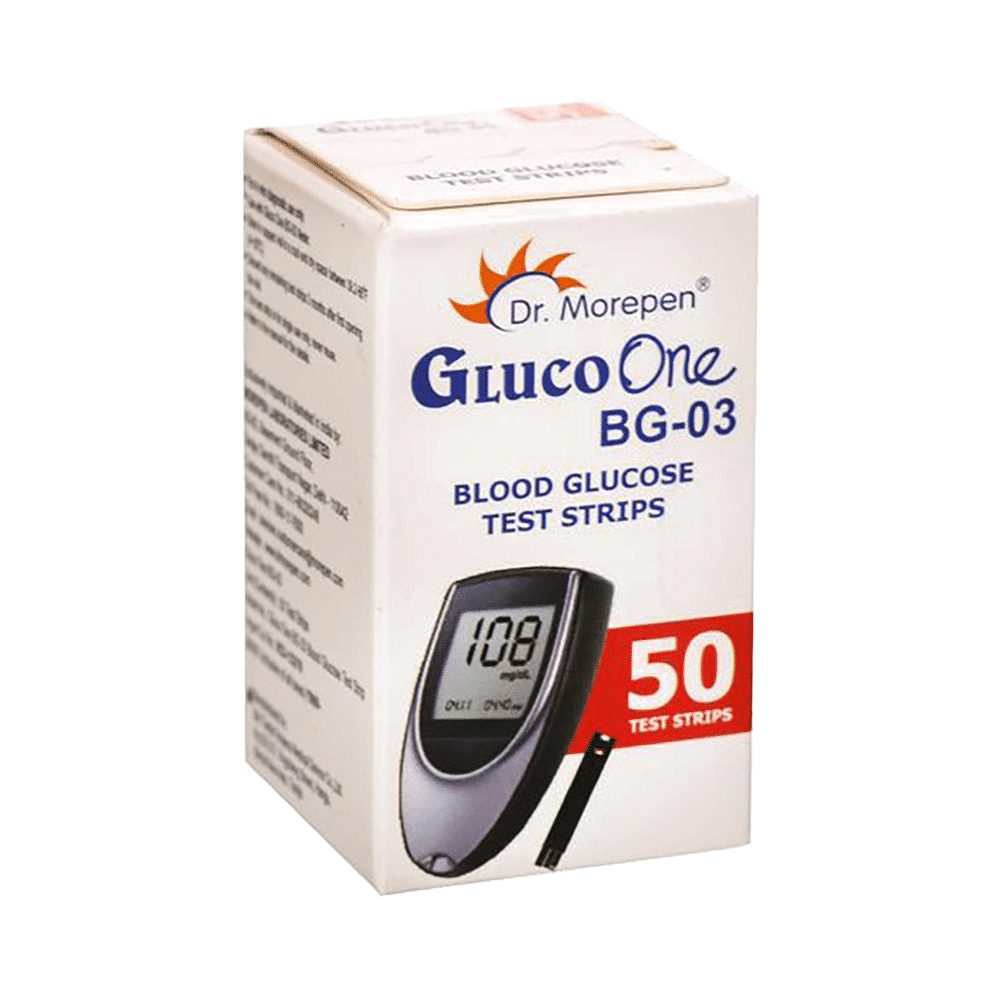
Dr Morepen Gluco One BG 03 Blood Glucose Test Strip (Only Strips) | Diabetes Monitoring Devices

Horlicks Choc 200 Gm

A To Z NS Syrup Mango

Cofsils Cough Drops Assorted
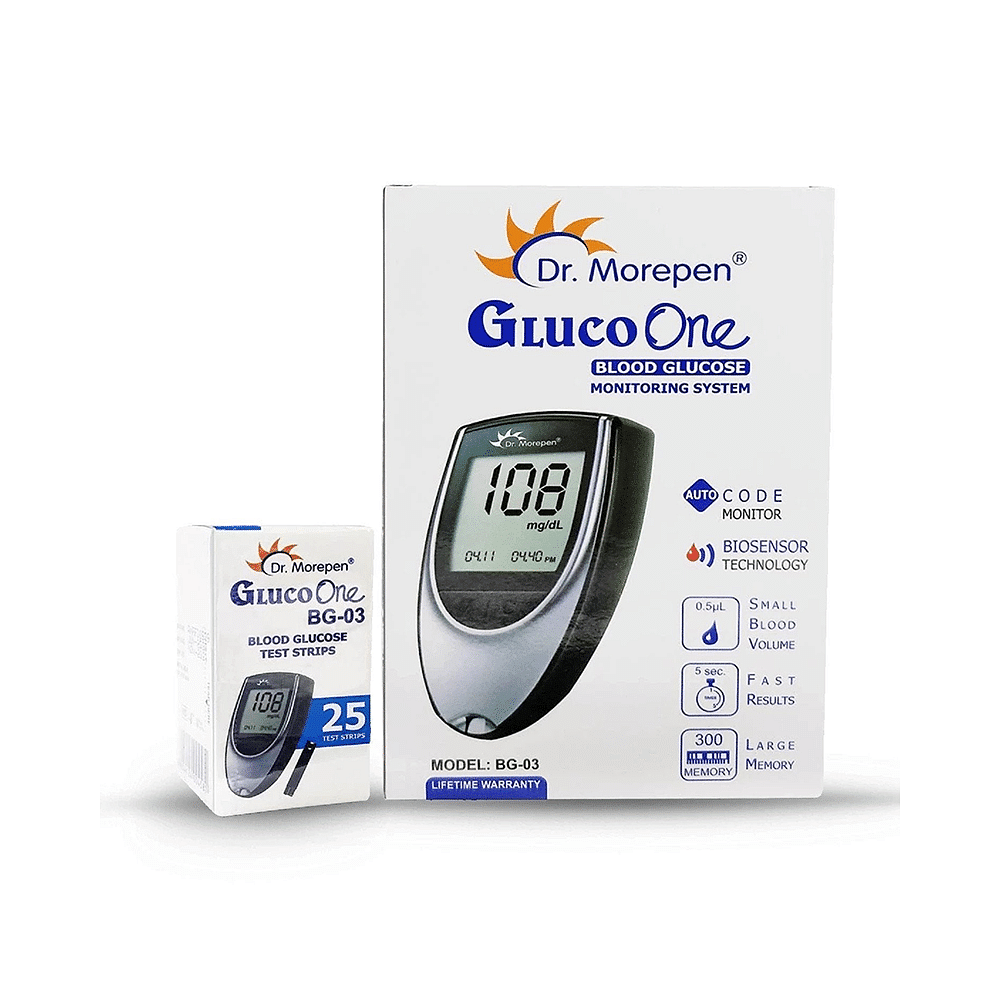
Dr Morepen BG 03 Gluco One Glucose Monitoring System Glucometer with Gluco One BG 03 Blood Glucose 25 Test Strip | Diabetes Monitoring Devices | Blood Glucose Monitors

Naturolax-A Tasty Orange Flavour Powder
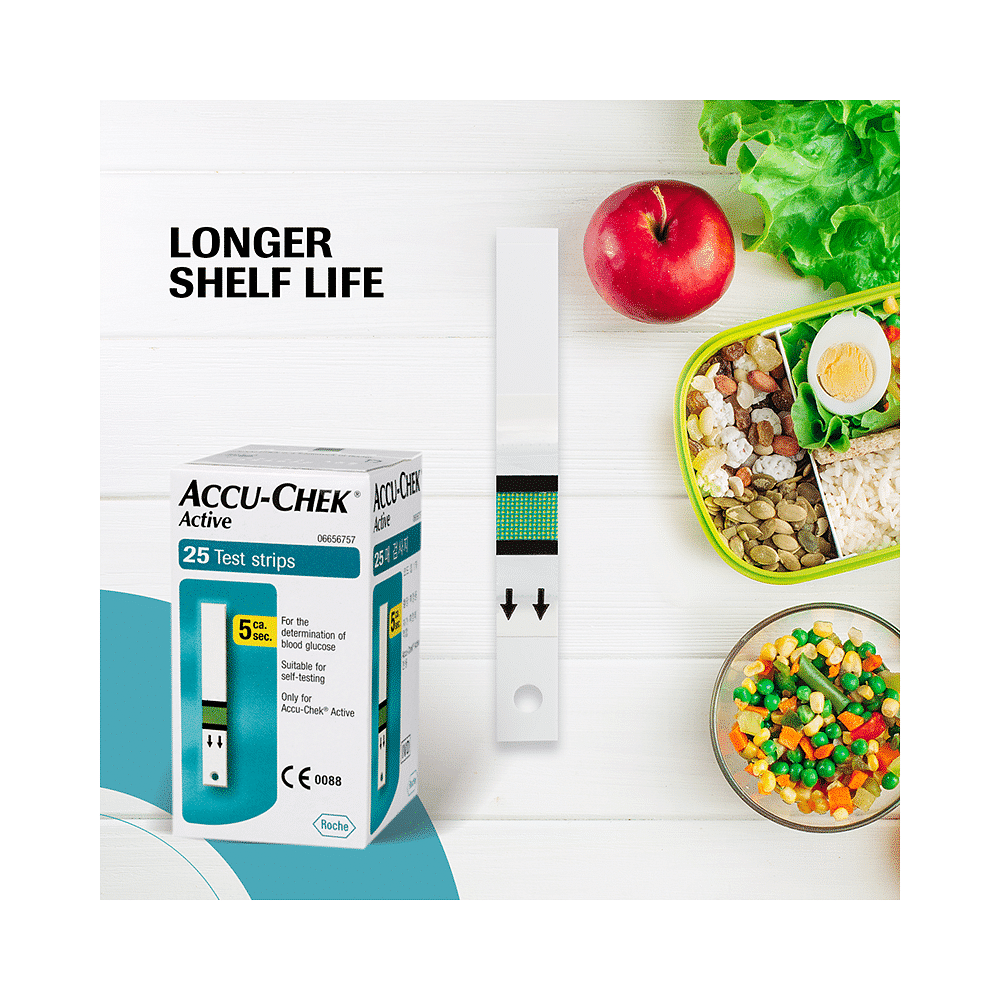
Accu-Chek Active Test Strip

Huggies Diaper Xs Paints
Frequently asked questions
Can blood sugar strips be reused?
No. All the blood glucose test strips are for single use only. Do not reuse a test strip, as it may not provide the appropriate results.
What are the benefits of glucometers?
It is well known that testing blood glucose levels with a glucometer at home is one of the best ways to regulate blood sugar levels. It can help to test blood glucose at any time of the day and anywhere. Using a portable glucometer is the best way to test glucose when travelling. Charting blood glucose levels becomes easy with glucometers, especially with devices with memory options to store previous readings. By helping to check blood glucose, blood glucose monitors can help manage blood glucose levels.
What is a normal glucometer reading?
According to the American Diabetes Association, the fasting or preprandial blood glucose levels for diabetics should be between 80 – 130 mg/dl, and postprandial (1-2 hours after meals) should be less than 180 mg/dl. However, the range mentioned in the glucose monitor may be a little different. So, speak to the doctor to calibrate the results with the lab reports.
How do blood glucose monitors work?
Diabetes devices or glucometers test the amount of glucose in the blood. The test strips in glucometers contain an enzyme glucose oxidase, which reacts with glucose in the blood and sends the result as an electronic signal displayed on the monitor.
How often blood glucose levels should be tested with a glucometer?
In the case of type 1 diabetes, check the blood glucose levels several times a day, such as pre and post-meals and before and after exercise or as advised by the doctor. Whereas, in the case of type 2 diabetes, monitoring the sugar levels might be based on the severity of the condition, which can be several times a day, once a day, or thrice a week. Hence, talk to the doctor about how often blood glucose levels should be tested.


